Consider having to compete with only 500 apps in the entire App Store. Sounds like every app marketer’s dream!
When the App Store was launched in 2009, that is what the landscape looked like. Four years later, in October 2013, Apple announced that the number of apps in the App Store crossed a line to a whopping 1 million, generating a record-breaking $10 billion in revenue. Not one to be left behind, Google Play caught up soon enough and crossed the 1 million apps mark within a few months.
As the number of apps in the market skyrocket, the challenges for app marketers continue to grow. While some miraculous overnight successes will pop up every now and then, having an app marketing plan in place now is crucial to the success of every app. Here’s a list of 11 pitfalls to avoid during your app’s pre- and post-launch phases that will help improve your chances of success.
Pre-launch Pitfalls
1. Not Investing in Market Research
Researching the key players in the category your app operates in can give you some great insights into what your target audience values in an app. How are other apps named? Are they memorable? Which categories are they targeting? Which keywords are they ranking high for? An analysis could prove to be very useful in getting your app in front of the right audience. To get started, create an excel sheet similar to the one shown below and list the key features in order to find out where your app stands against the competition.
This will give you an idea of whether there are any key features your competitors support that you have missed.
Marketers also often overlook the power of customer reviews. Look at the reviews of competing apps and make a list of all of the good and bad comments. This will help you understand what your customers value as well as their pain points. Here’s a great example of a user making feature requests via a review in the App Store. Making a list of the recurring feature requests and communicating the same to the product team will help you stay ahead of the game.
2. Not Having a Feedback Loop
So, let’s say you spend a great deal of time developing features that you think will make your app a rage once it’s out, and you get your entire team to send in their feedback on the app. But, are they the real target customers of your app? Beta testing is the first opportunity to get some unbiased first-hand feedback from your target audience.
Identify your target customer, find out which channels will help you reach them, and recruit beta testers. Actively engage with them to learn as much as you can. Reward active beta testers and put them on the early sign-up list so they’re the first to know when your app is out.
TestFlight can be a great platform for organizing beta testing. The number of beta testers you need depends on a number of factors, such as your goals and length of the test, how much you are willing to spend on it, and your target market. You can read more about it here.
3. Not Getting Marketing Involved Soon Enough
Although finishing up development and releasing your app might seem like the most crucial tasks, making sure that your app gets discovered is equally important. However, very often, planning the marketing activities for an app is one of the most neglected areas of app development.
Besides this, companies often make the mistake of getting the marketing team involved very late in the product development phase. This can be dangerous since they are the ones who plan the go-to-market strategies for your app. They need to understand every feature built into the app.
Here is a basic checklist of activities that your marketing plan should include:
- Find out the USP of your app – Know what makes your app unique.
- Optimize for the App Store – App store optimization is crucial for the success of your app. Here are some tips to optimize your app name, keywords, and description:App Name – You can choose to name your app based on common search terms or use a branded name that you can copyright. A lot of app developers optimize their app names by using a combination of branded and common search terms to enhance discoverability. For example: If you create a photo editing app, it might be a good idea to use the words “photo editor” in the app name along with a branded name. Here are examples of a few apps that do this:
Keywords – The most crucial aspect of discoverability – the keywords that will help your app get discovered by users. Every app gets 100 characters in the keywords section. To arrive at this, you can create an excel sheet similar to the one given below:
It’s important to experiment with your keywords to find out what is working for your app. Maintain a document that lists your keyword changes and make a note of the impact on the ranking whenever you change your keywords.
Description – The App Store displays only 2-3 lines of text. Users need to tap on “more” in order to continue reading the description. Hence, it’s important that your app clearly convey the key message in the first 2-3 lines. Here’s a good example:
Not only does the description indicate the key message, it also reinstates the popularity of the app by pointing out that 2 million people use it.
- Create a preview trailer – Generate early buzz and gauge response.
- Blog about the development process on your website –If you don’t have a website, create a free blog using WordPress or Tumblr. Allow interested users to sign up for newsletters here.
- Plan your beta test – Plan your beta test well in advance so you can incorporate feedback.
- Create a promotional channel list – Find the best channels for promoting your app.
- Shortlist forums – Visit forums pertaining to your target audience and start interacting with users.
- Outreach plan – Plan who you will reach out to and when.
- Create a press kit – Include app icons in different sizes, screenshots, and other information about your app.
- Promotional deadlines – Create a timeline for all the activities to be carried out. This will ensure that you are prepared when your app releases.
4. Not Planning the App Release Date in Advance
While the eagerness to get your app out in the market as soon as the last line of code is written is understandable, planning a release date in advance will help you ensure it gets press coverage. Marketers often have to deal with delays in the project deadline and end up having to deal with an unplanned release date as soon as the app is ready.
Also, make sure you keep track of key announcements in the tech world so that your app’s release date does not coincide with them because it is unlikely your app will get enough attention on those days. In addition, building anticipation around your app and getting it previewed by influencers can be crucial to get the ball rolling.
A good example of a company that got this right is the virtual pet app, Hatch.
The app was announced almost a year ahead of its release date in November 2013. The preview website displayed a video with an option to sign up to “adopt” a pet, a great way to generate curiosity around the app and get the early adopters to sign up. The app looked extremely polished even back in 2012, which ensured that it garnered a lot of great reviews from top review websites like The Verge, TechCrunch, and Forbes, something that is crucial in a crowded App Store.
A well planned release ensured that Hatch became the #1 paid app in the App Store within days.
Post-launch Pitfalls
5. Not Focusing on User Engagement and Retention
Even if you are one of those lucky marketers with thousands of dollars to plan around, paid user acquisition should not be your key marketing strategy. While pumping in some money to get initial downloads for your app is all right, in the long run it pays to focus on user engagement and retention. Otherwise, you will see people dropping off soon enough.
To use paid user acquisition the right way, find out which paid channels work best for you and use them in combination with your other marketing strategies. Here’s a list of the top 11 paid app marketing channels you can try.
6. Not Measuring Anything or Measuring Everything
While revenue is a great indicator of the success of your app, it doesn’t necessarily indicate sustained gains. Sure, your team is delighted looking at the amount of money your app is bringing in every day, but… Are you measuring which features are drawing people in? Is there any particular section where people are dropping off? How often are people using your app every day? Looking at these parameters is important in order to continuously improve your app and keep users engaged. Some key performance indicators that you should be measuring:
- DAU and MAU – Your daily and monthly active users.
- Retention Rate – Measure 1-, 7-, and 30-day retention rates. This will help you determine how well your app fits into your users’ lives.
- ARPU – Your average revenue per user. You can calculate this as: ARPU = Total revenue generated by the app / Total active users of the app.
- LTV or Life Time Value – The value of your app user over their lifetime in the app. You can calculate this as: LTV = ARPU x (1/CHURN), where CHURN is the number of users that left the app after a given amount of time.
That said, don’t get too obsessed with numbers, trying to measure everything within your app. Figure out the metrics that are important for the success of your business and work toward improving them to define the long-term success of your app.
7. Not Using Your App’s Update Description Space for Marketing
Google’s Our Mobile Planet research reports that, on average, a smartphone user downloads 25 apps on his phone, with the number being as high as 40 in some countries. I currently have 176 apps that have updates!
When a user notices updates being available from so many apps, it goes without say that they might not update all of them, especially if the update description just reads “bug fixes.”
Treat the app update description space as a marketing channel to convey in an interesting manner what is new that your app has to offer, as well as the issues that are fixed. This can be a great strategy to get back users who haven’t opened your app in a while. For example, PC Gamer magazine does a great job of this.
Not only are they informing users about the improvement in the latest version of the app, but also using the update space effectively by highlighting their free trial offer and providing details on customer support.
This brings us to the oft forgotten issue of customer support.
8. Not Paying Attention to Customer Support
Your app could have thousands or even millions of users. But in a competitive market, every user must be treated with care. Word of mouth is a powerful tool for any marketer and one that can be harmful if you don’t pay attention to your users.
While Apple’s App Store still does not provide a way to respond to user reviews, marketers can reply to customers directly on Google Play. Even though this feature is now available to all developers, not everyone is using it to provide timely support to customers. Here’s an excellent example of a developer responding to a customer query on the same day while also providing their support email to solve issues privately.
9. Not Giving Users Their Space and Freedom from Push Notifications
Push notification is a great channel for nudging your users to launch your app again, take a photo, or check in. But bug your users too much and they won’t think twice before uninstalling your app, no matter how good it is. Plan your push notifications carefully and let users turn them off easily if they want. Also, make sure you keep different time zones in mind while sending a push notification.
10. Not Personalizing Your App Review Pitch Email
Most marketers plan an email outreach as soon as an app is out in the market. While it goes without saying that you should include all of the important information about your app, one crucial aspect that marketers often falter in is personalizing each email. Either don’t have the reviewer’s name and website mentioned in the email, or if you want to add it, make sure you double check it and don’t copy-paste blindly. Most reviewers will not give an email a second look if it is addressed incorrectly. Make sure to include the following:
- Your app’s name, price, and its USP
- A Link to the App Store
- A link to the trailer for reviewers who prefer visual pitch
- A link to your app’s press kit
11. Not Providing Incentives to Share or Like
Remember Facebook in 2009? When all that your feed contained were Farmville success stories? The trend eventually died down. Users don’t tweet every high score or share their progress in the app just for the heck of it. Simply adding a Like, Tweet, or Share button in your app might not be effective when you’re looking to grow your social media audience. Every share must be earned.
Provide users with incentives that’ll encourage them to share or perform an action. Here’s a great example of an app that opens up locked features for users who “Like” their Facebook page.
Another great example is how the app Gesundheit does this. The app first asks the user to share to unlock additional levels.
Even if a user does not share, the app unlocks bonus levels for them anyway. This not only does the job of getting you Likes and Tweets but also establishes goodwill among the users who don’t want to share.
Closing Remarks
The app ecosystem is continuously evolving and marketers need to stay on top of it. Avoid these common yet often overlooked pitfalls during the pre- and post-launch phases of your app to increase your chances of success. Create a checklist and go through it at every phase. Understand what your audience cares about and be responsive to their feedback. A timely update can ensure that you don’t lose a valuable customer to your competition. When it comes to app marketing, every small detail matters.
Have you encountered any additional pitfalls? Let me know in the comments section.
About the Author: Seema Nayak heads Digital Marketing at MobStac, a mobile commerce platform delivering exceptional mobile apps for e-commerce businesses and consumer brands on HTML5, Android, iOS, and Windows. You can contact her on Twitter (@mobstac) or get more mobile marketing tips on the MobStac blog.


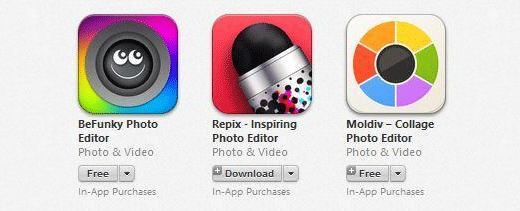 Keywords – The most crucial aspect of discoverability – the keywords that will help your app get discovered by users. Every app gets 100 characters in the keywords section. To arrive at this, you can create an excel sheet similar to the one given below:
Keywords – The most crucial aspect of discoverability – the keywords that will help your app get discovered by users. Every app gets 100 characters in the keywords section. To arrive at this, you can create an excel sheet similar to the one given below:
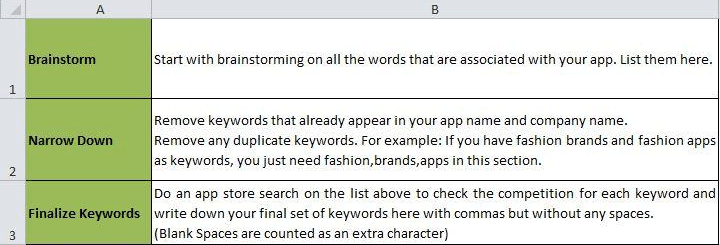

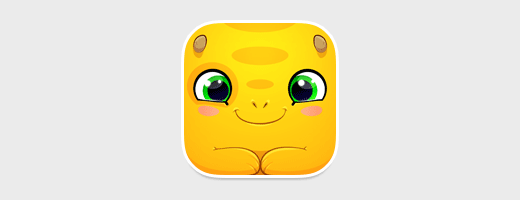
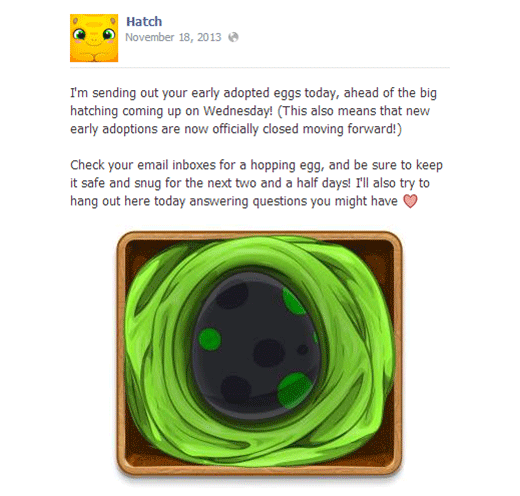
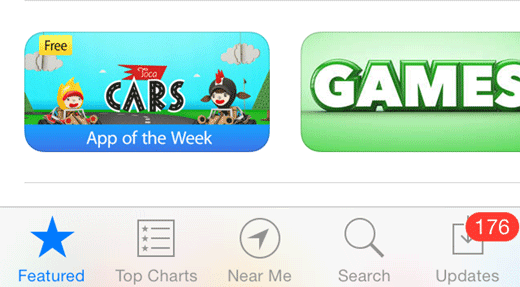
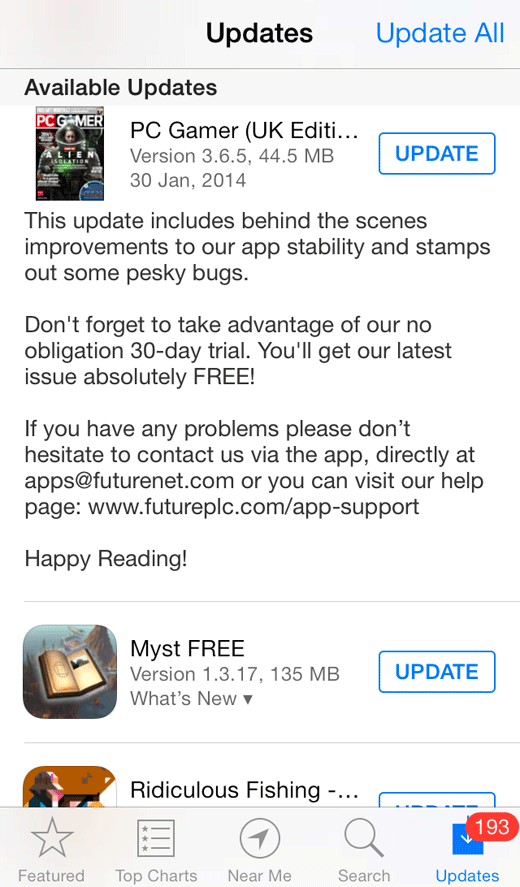
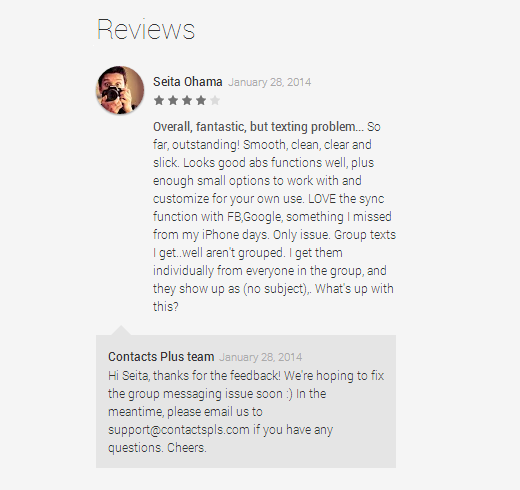
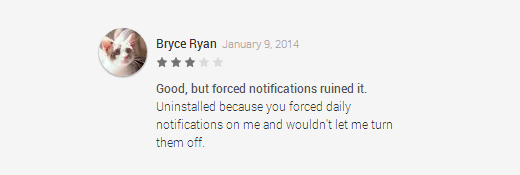
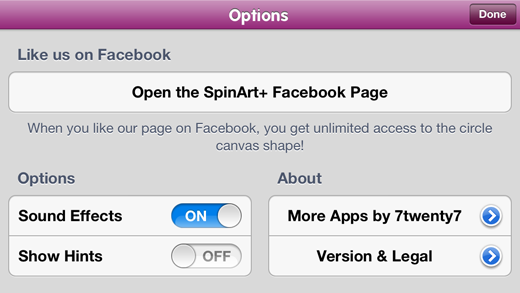
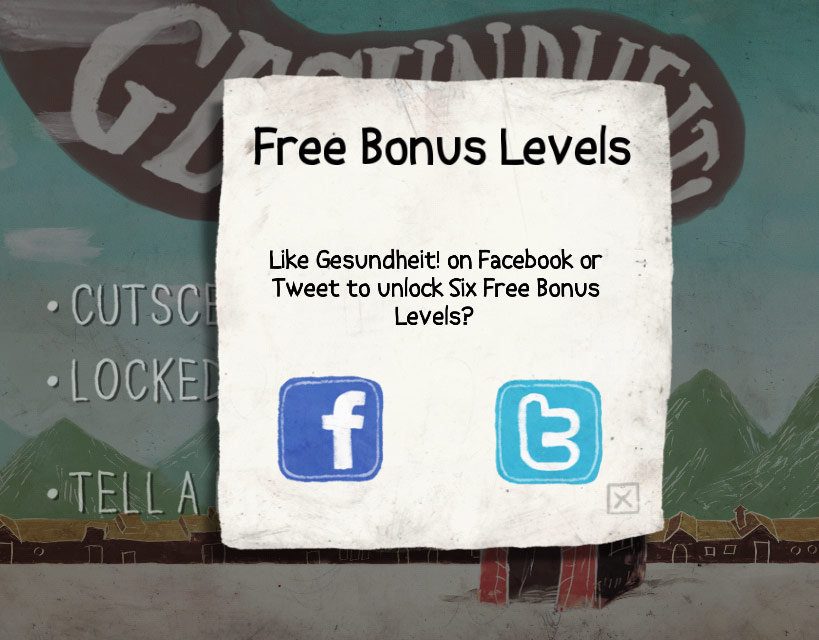
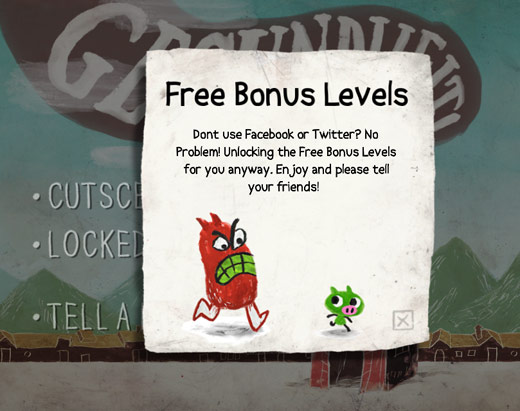
Comments (28)